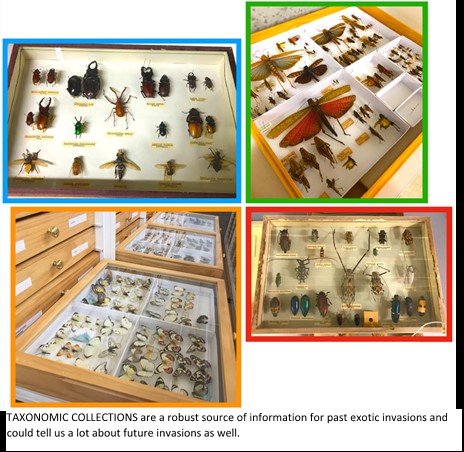By Kaavya Benjamin @kaavyabenjamin95
Globalisation has ensured the prompt arrival of our Amazon purchases, direct flights to Hawaii and ability to share the best of what NZ has to offer with the world. However, the increase in global trade and transport has also intensified the establishment and spread of exotic insect species. These are insect species who invade areas they aren’t native. A recent study also showed that these hitchhiking invaders aren’t planning on stopping any time soon.
Exotic insect invaders can do a lot of harm to native ecosystems. For example, in NZ Vespula wasp invaders have been known to reduce honeydew by 70% and compete with the endangered Kaka. Argentine ants are one of the most problematic invaders of the insect world. Like Genghis Khan’s hordes, the abundance and aggressive nature of this species cause major problems for native birds, lizards and insects. These issues have driven numerous studies to understand the negative impacts of these invaders on native ecosystems. However, very little is known about the dynamics of their spread once established.

More than 1,400 exotic insect species have established in NZ, that we know of. Of these over 500 are herbivores who attack numerous plant species. However, other than a few well-known examples, comparatively, there aren’t many instances of exotic insect herbivores spreading into native NZ ecosystems. This is thought to be due to the resistance of the native ecosystems to invaders because of phylogenetic differences between NZ and overseas plants.
However, the more alarming fact is that exotic insect species in NZ have not yet reached equilibrium, meaning their spread will likely continue in the future. A study in 2012 showed the vulnerability of habitats to invasion was dependent upon rates of spread of exotic species. Thus, taxonomic collections, which house specimens collected over a wide range of time and space, could help identify key drivers of population dynamics for the spread of exotic insects. This could point to management options to control/limit widespread invasion. Taxonomic collections can also come in handy when informing conservation managers where control efforts can best be targeted. I am using the New Zealand Arthropod Collection to assess the spread of herbivorous insects into native NZ ecosystems as a part of my Masters’ project. This could help DOC and MPI come up with better pest risk-assessments and provide information for invasive species research.

Understanding the dynamics and patterns of past invaders could also result in better-informed predictions for future exotic invasions. While taxonomic collections are far from perfect, they are still a robust source of information which can aid conservation management.
Kaavya is a Masters student in the School of Biological Sciences, University of Auckland. Her project aims to assess spread, over time, of all exotic herbivorous insects into native New Zealand ecosystems. She is supervised by Darren Ward.



 Yen Yi Loo is a PhD student in the School of Biological Sciences, University of Auckland. Her study aims to determine whether the rifleman (Acanthisitta chloris) are vocal learners by investigating the ontogeny and temporal changes in their vocal parameters, and its implication on the evolutionary origins of vocal learning in the avian phylogenetic tree. She is supervised by
Yen Yi Loo is a PhD student in the School of Biological Sciences, University of Auckland. Her study aims to determine whether the rifleman (Acanthisitta chloris) are vocal learners by investigating the ontogeny and temporal changes in their vocal parameters, and its implication on the evolutionary origins of vocal learning in the avian phylogenetic tree. She is supervised by 





 Dr Margaret Stanley
Dr Margaret Stanley